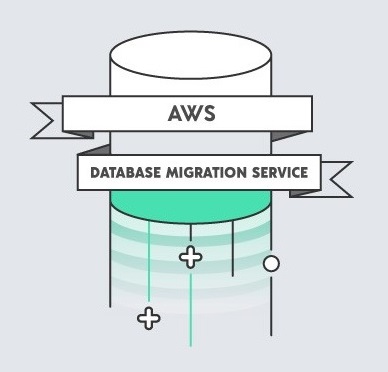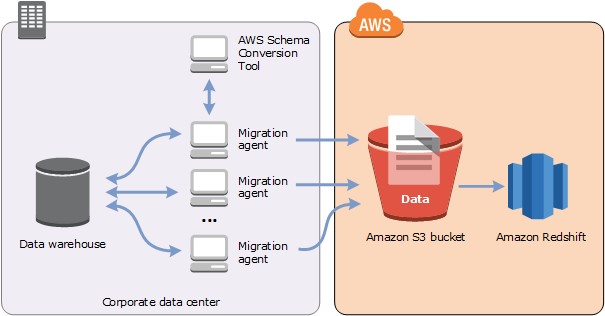AWS Database Blog
Database Migration Gaining Momentum
Ilia Gilderman is a senior software development manager at Amazon Web Services.
 Only five months have passed since our most recent post, in March 2017, about the momentum of AWS Database Migration Service (AWS DMS). So far, we’ve watched our customers migrating over 35,000 unique databases to AWS using AWS DMS.
Only five months have passed since our most recent post, in March 2017, about the momentum of AWS Database Migration Service (AWS DMS). So far, we’ve watched our customers migrating over 35,000 unique databases to AWS using AWS DMS.
Here is a quick recap for anyone who is reading about AWS DMS for the first time.
AWS Database Migration Service helps anyone migrate databases to AWS easily and securely. The source database remains fully operational during the migration, minimizing downtime to applications that rely on the database. AWS DMS can migrate your data to and from most widely used commercial and open-source databases and data warehouses.
In addition to AWS DMS, we developed the AWS Schema Conversion Tool (AWS SCT). AWS SCT makes heterogeneous database migrations easy by automatically converting the source database schema and a majority of the custom code—including views, stored procedures, and functions—to a format that is compatible with the target database. Any code that can’t be automatically converted is clearly marked so that it can be manually converted.
AWS SCT can also scan your application source code for embedded SQL statements and convert them as part of a database schema conversion project. During this process, AWS SCT performs cloud-native code optimization by converting legacy Oracle and SQL Server functions to their equivalent AWS service, thus helping you modernize the applications during the migration. AWS SCT can also help convert schema for a range of data warehouses into Amazon Redshift. When schema conversion is complete, you can migrate the data to Amazon Redshift using built-in data migration agents.
Expanded migration capabilities
We also significantly expanded our data warehouse migration capabilities and now support schema conversion and data extraction for six leading commercial platforms: Teradata, IBM Netezza, Microsoft SQL Server, Oracle, Micro Focus Vertica, and Greenplum. You now can move workloads from these systems into Amazon Redshift using AWS SCT and AWS SCT migration agents. For more details, see Working with Data Warehouses.

Since the March post, we’ve expanded AWS DMS migration and replication capabilities significantly by adding NoSQL source and targets, so you can migrate your databases to Amazon DynamoDB (among other options).
These new NoSQL connectors and migration agents provide a variety of interesting use cases that you can now implement. Most notably:
- Replicating data from relational databases to Amazon Redshift, if you’re interested in reducing the workload on your databases and running analytics workloads in Amazon Redshift.
- Creating data lakes with the Amazon S3 (One of the implementations is described in the post Using the AWS Database Migration Service, Amazon S3, and AWS Lambda for Database Analytics.) This capability is for customers who are interested in replicating data from multiple sources, such as relational and NoSQL databases and data warehouses.
Customer examples
One of the best ways to get a feel for the various uses of AWS DMS is through some recent customer examples. We asked customers what their old database environment was like, what prompted them to make a change, and what their recommendations would be for a successful migration.
Let’s start with the SVP and CIO of Smile Brands Inc., George J. Suda. Smile Brands Inc. is one of the largest dental support organizations in the US, supporting hundreds of dental offices:
“We are in the process of migrating from an on-premises Oracle RAC environment to Amazon RDS for PostgreSQL. Our first step is migrating Oracle on-premises to RDS for Oracle. We found that we had two different sets of requirements that DMS helped fulfill. The first requirement is to replicate data off of Oracle to PostgreSQL. DMS has provided us a great solution to address this requirement. In addition, we need to keep certain code tables in sync across multiple database instances on different database platforms. DMS has provided us the technical solution to fulfill that requirement as well. We are currently moving other workloads to Amazon. We are now looking at replacing a replication product we are using with DMS.”
Next, let’s look at Trimble, a leading provider of advanced location-based solutions. Their situation was different: they needed to assess the efforts required to convert their Oracle infrastructure. Here is what Todd Hofert, Director of Infrastructure Operations at Trimble, said about AWS SCT:
“The infrastructure Operations Group at Trimble has recently embarked on an aggressive initiative to migrate our privately hosted SaaS offerings to Amazon Web Services. We set out a migration plan that included a conversion of our databases from Oracle to a more cost-effective platform while continuing to utilize our existing front-end solutions. The AWS Schema Conversion Tool Assessment Report allowed us to measure the level of effort required to complete a conversion applied against a few alternative target database platforms. It provided a clear picture of where we would have to spend effort dealing with functional gaps between Oracle and PostgreSQL and allowed us to plan our resourcing accordingly. In the end, the SCT Assessment Report was the key enabler to allow us to understand the scope of effort required to complete this migration. What was originally thought to be a largely manual task that no one was particularly excited about having to do became a very straight-forward quick and easy process.”
Recent service enhancements
Here is a summary of what we have added to AWS DMS and AWS SCT since March 2017:
- March 2017 – AWS Database Migration Service achieves HIPAA compliance
- March 2017 – Support for Amazon S3 as a target for AWS DMS
- April 2017 – Support for MongoDB as a source and DynamoDB as a target for AWS DMS
- April 2017 – Support for data extraction from Vertica, Netezza, and Greenplum to Amazon Redshift in AWS SCT
- May 2015 – Support for data extraction from SQL Server to Amazon Redshift in AWS SCT
- June 2017 – Expansion to the AWS GovCloud Region
- June 2017 – AWS SCT supports data extraction from Teradata v13 and Oracle v10g and above
- July 2017 – AWS CloudFormation support for AWS DMS
- July 2017 – AWS DMS achieves Payment Card Industry (PCI) compliance
See you at re:Invent 2017
The AWS DMS/SCT team is planning to attend re:Invent and conduct multiple break-out sessions and workshops. We would be more than happy to discuss your migration projects and ideas.